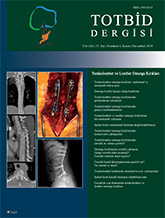
Within the spine fractures, thoracolumbar region fractures are common injuries. Since they are located in the transition zone of the thoracic and lumbar region, if not properly treated they are more likely to cause deformity development and/ or neurological complications in the future. Conservative treatment and surgical treatment options are available. When determining the treatment option, it is important to classify the fracture in order to understand the type of fracture, and the morphology of the injury. There are some important concepts to be considered when determining the indications for surgical treatment. These are the concepts of stability and neurological impairment. Stabilized posterior ligamentous complex occupies an important place. Magnetic resonance imaging is very valuable for the evaluation of this complex in the posterior. Neurological complications related to fracture are an indication of surgical treatment for many surgeons. Anterior, posterior or combined anterior-posterior approaches may be applied surgically. The fracture type and experience of the surgeon are effective factors in selecting the surgical approach. Improved surgical implant technology and modifications of surgical approaches have allowed 360° decompression of the spinal canal by posterior approach. The high complication risks of anterior surgery and the fact that it is a more experience dependent surgical technique has recently made posterior approach more popular in thoracolumbar spine fractures. In the current article, we mentioned the surgical approaches and the classification of thoracolumbar spine fractures, and discussed which fracture types require surgery.